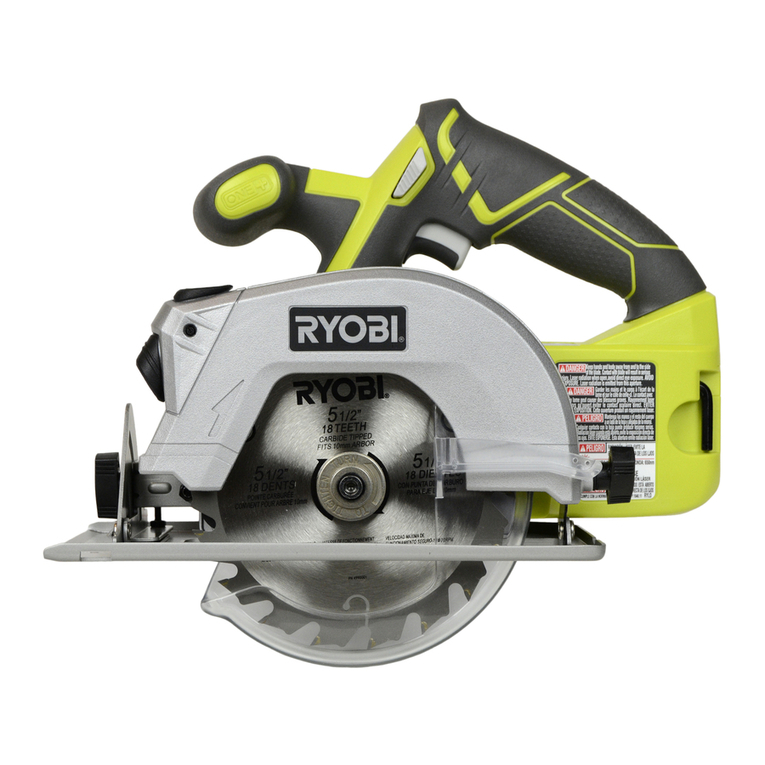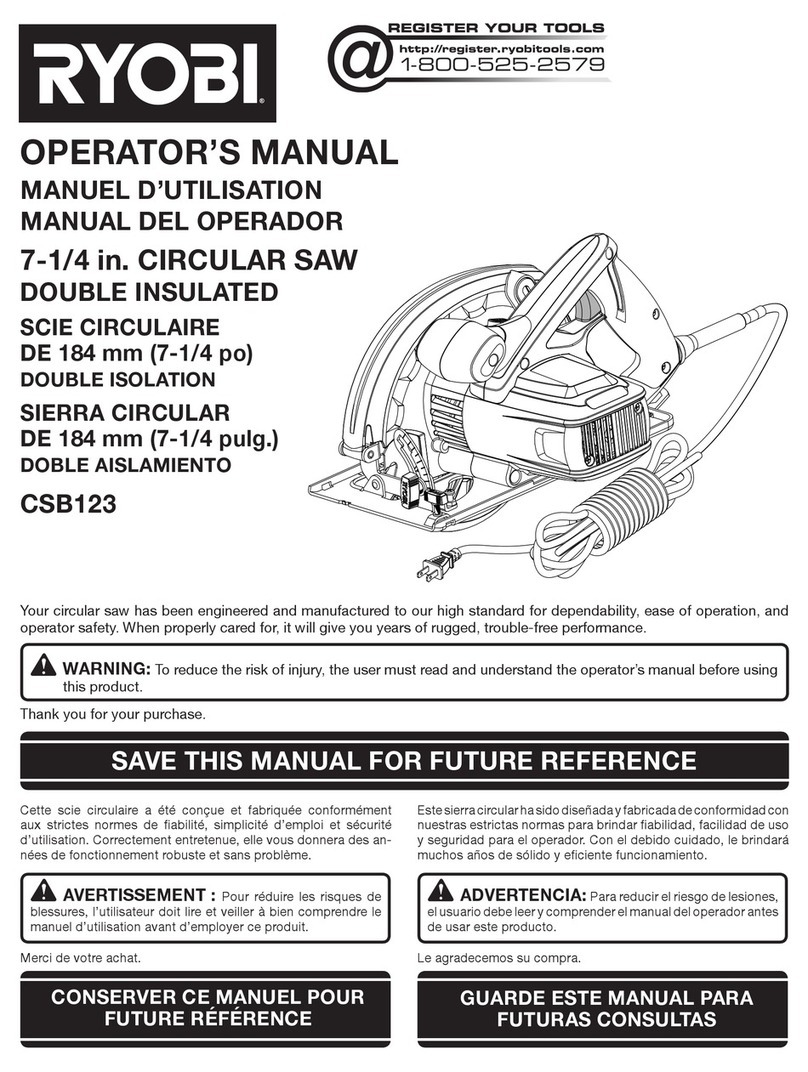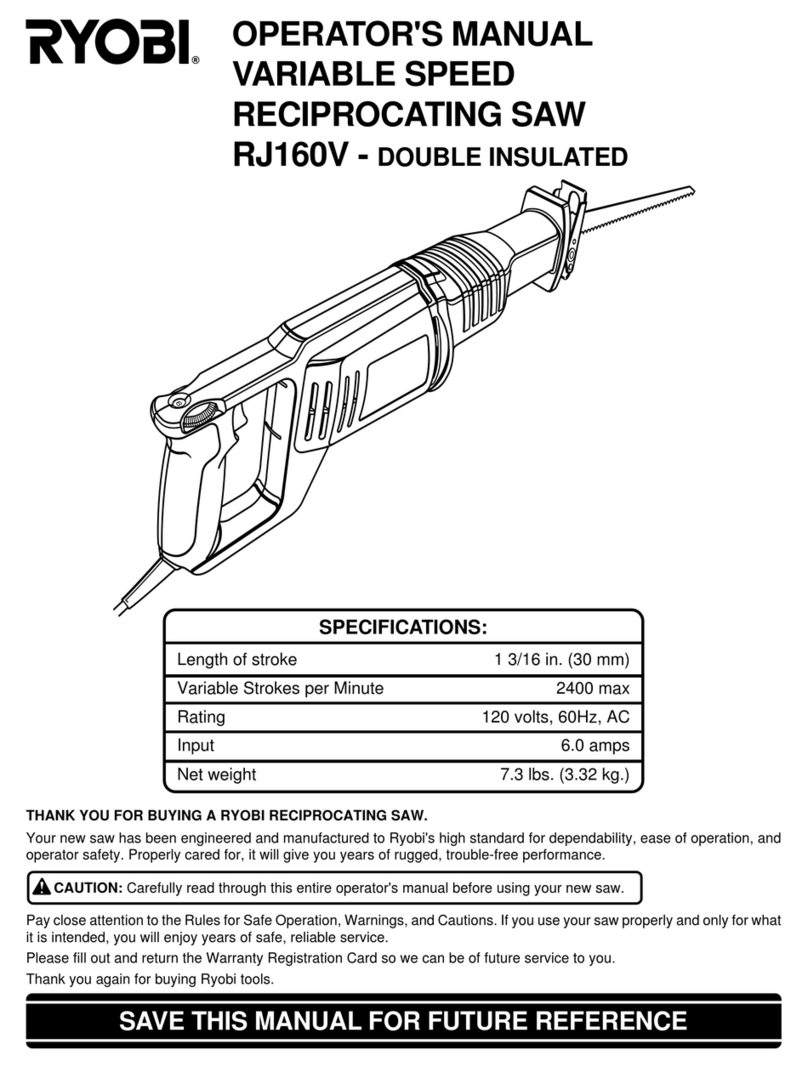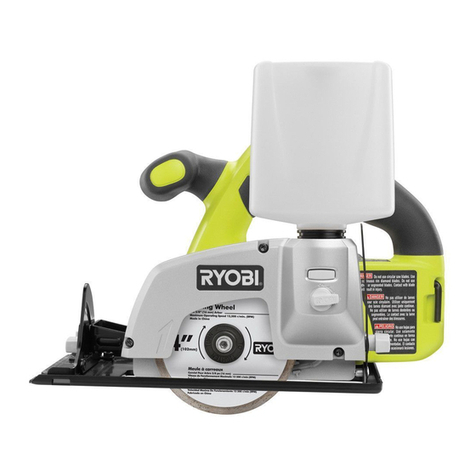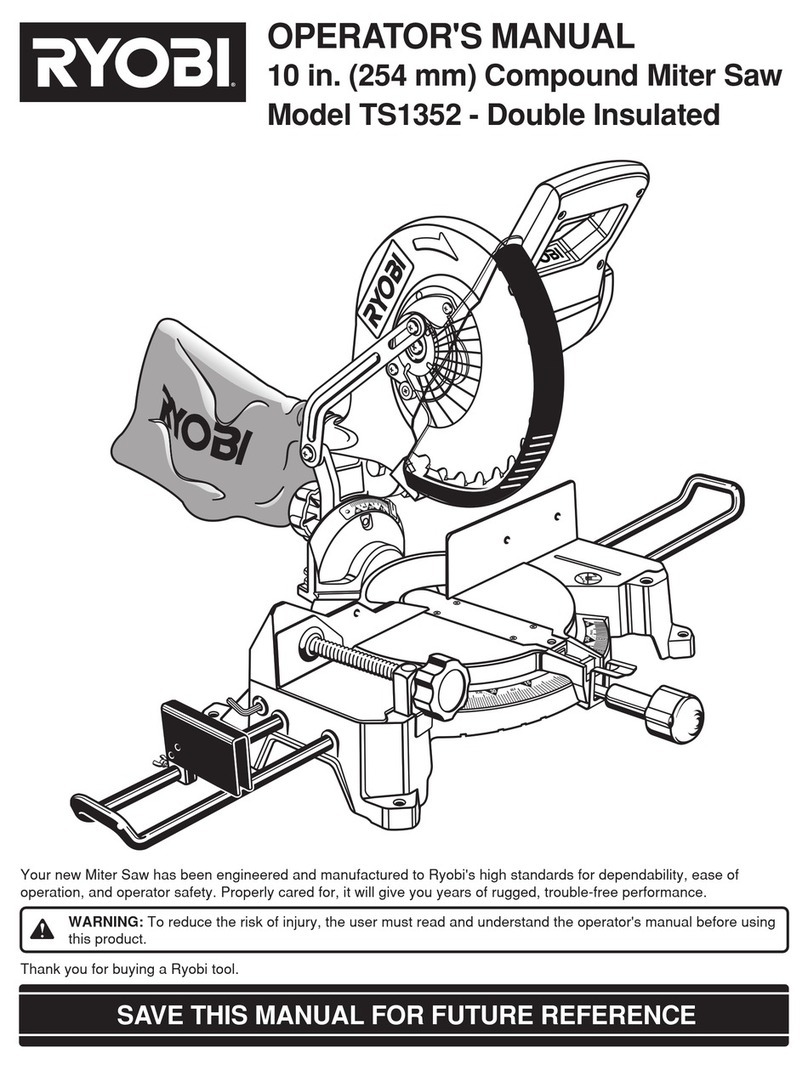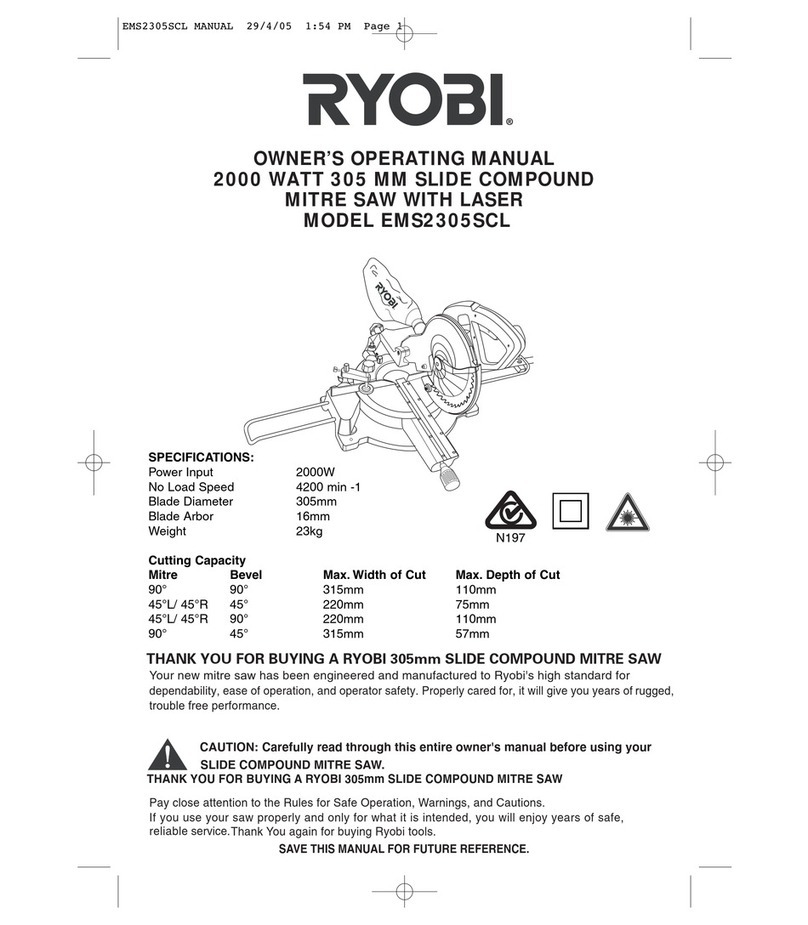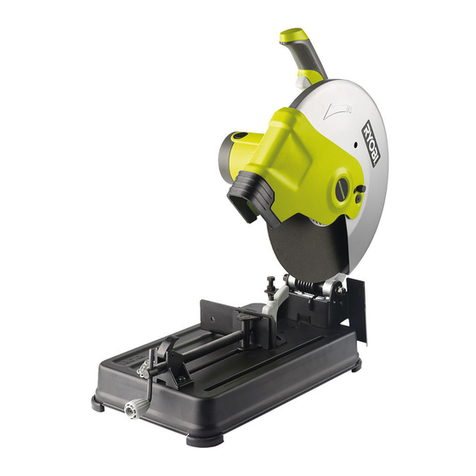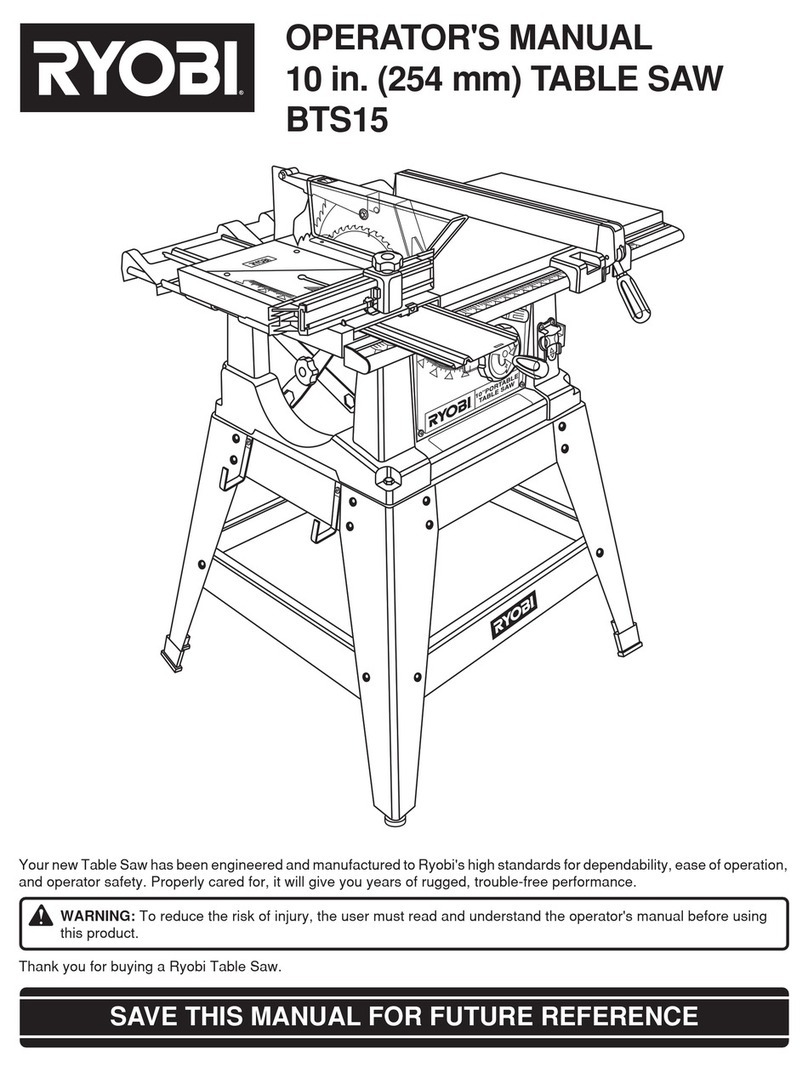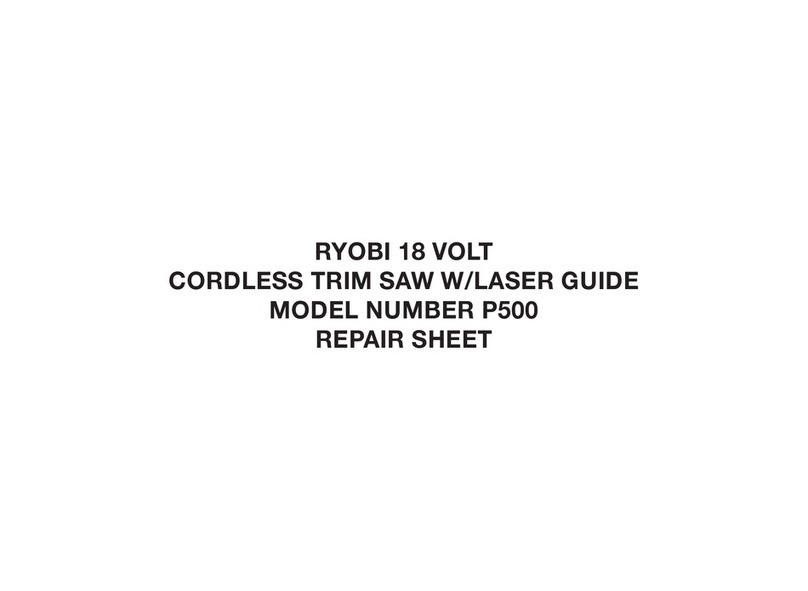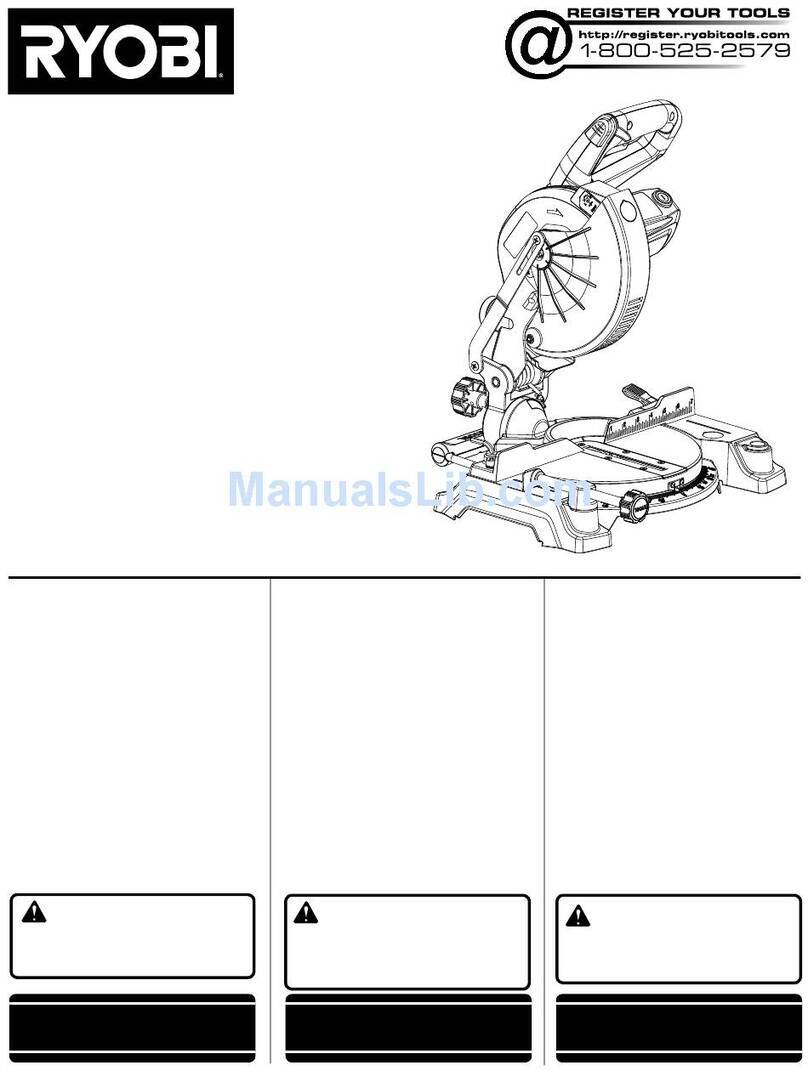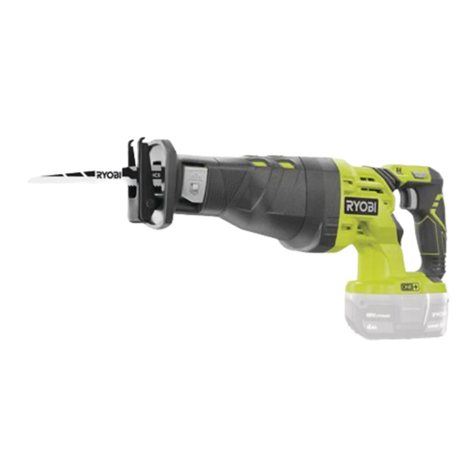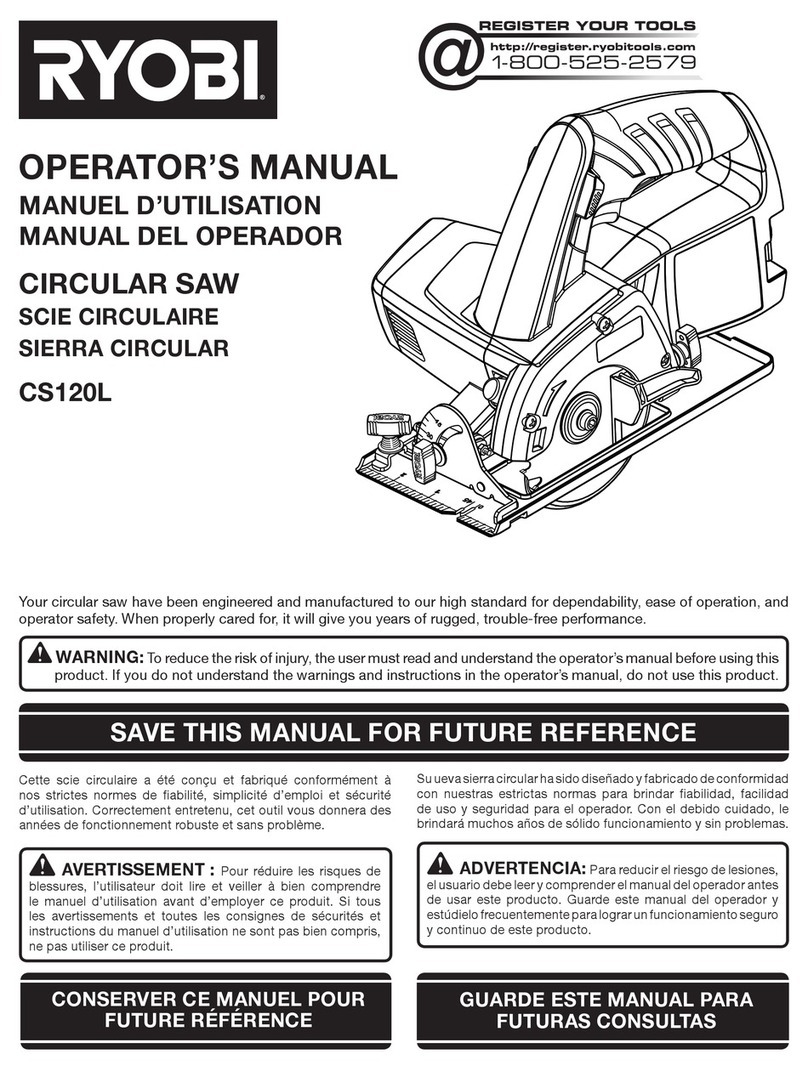
1
IMPORTANT
READ THESE SAFETY INSTRUCTIONS.
Before using the CIRCULAR SAW, please read the
manual carefully, especially the safety instructions.
Keep this manual for future reference.
GENERAL SAFETY RULES
WARNING! Read all instructions. Failure to follow all
instructions listed below may result in electric shock, fire
and/or serious injury. The term “Power Tool” in all of the
warnings listed below refers to your mains operated
(corded) power tool or battery operated (cordless) power
tool.
SAFETY ALERT SYMBOL. Indicates caution
or warning. May be used in conjunction with
other symbols or pictures.
WARNING: Failure to obey a safety warning can
result in serious injury to yourself or to others.
Always follow the safety precautions to reduce
the risk of fire, electric shock and personal injury.
WARNING: Do not attempt to operate this tool
until you have read thoroughly and understood
completely safety rules, etc. contained in
this manual. Failure to comply can result in
accidents involving fire, electric shock or serious
personal injury. Save owners manual and review
frequently for continuing safe operation and
instructing others who may use this tool.
The operation of any tool can result in
foreign objects being thrown into your
eyes, which can result in severe eye
damage. Before beginning power tool
operation, always wear safety goggles
or safety glasses with side shields and a full face shield
when needed. We recommend Wide Vision Safety Mask
for use over eyeglasses or standard safety glasses with
side shields.
WORK AREA
■Keep work area clean and well lit. Cluttered and
dark areas invite accidents.
■Do not operate power toolsin explosive
atmospheres, such asin the presence of
flammable liquids, gasesor dust. Power tools
create sparks which may ignite the dust or fumes.
■Keep children and bystandersaway while
operating a power tool. Distractions can cause you
to lose control.
ELECTRICAL SAFETY
■Power tool plugsmust match the outlet. Never
modify the plug in any way. Do not use any
adapter plugswith earthed (grounded) power
tools.Unmodified plugs and matching outlets will
reduce risk of electric shock.
■Avoid body contact with earthed or grounded
surfacessuch aspipes, radiators, rangesand
refrigerators. There is an increased risk of electric
shock if your body is earthed or grounded.
■Do not expose power toolsto rain or wet
conditions. Water entering a power tool will increase
the risk of electric shock.
■Do not abuse the cord. Never use the cord for
carrying, pulling or unplugging the power tool. Keep
cord away from heat, oil, sharp edges or moving
parts. Damaged or entangled cords increase the risk
of electric shock.
■When operating a power tool outdoors, use an
extension cord suitable for outdoor use. Use of a
cord suitable for outdoor use reduces the risk of
electric shock.
PERSONAL SAFETY
■Stay alert, watch what you are doing and use
common sense when operating a power tool. Do
not use a power tool while you are tired or under the
influence of drugs, alcohol or medication. Amoment
of inattention while operating power tools may result
in serious personal injury.
■Use safety equipment. Always wear eye protection.
Safety equipment such as dust mask, non-skid safety
shoes, hard hat or hearing protection used for
appropriate conditions will reduce personal injuries.
■Avoid accidental starting. Ensure the switch is in
the off position before plugging in. Carrying power
tools with your finger on the switch or plugging in
power tools that have the switch on invites accidents.
■Remove any adjusting key or wrench before
turning the power tool on. Awrench or a key left
attached to a rotating part of the power tool may
result in personal injury.
■Do not overreach. Keep proper footing and
balance at all times.This enables better control of
the power tool in unexpected situations.
■Dress properly. Do not wear loose clothing or
jewellery. Keep your hair, clothing and gloves away
from moving parts. Loose clothes, jewellery or long
hair can be caught in moving parts.
■If devicesare provided for the connection of dust
extraction and collection facilities, ensure these
are connected and properly used. Use of these
devices can reduce dust related hazards.
ECS12519-Eng.qxd 10/10/04 2:15 PM Page 1
